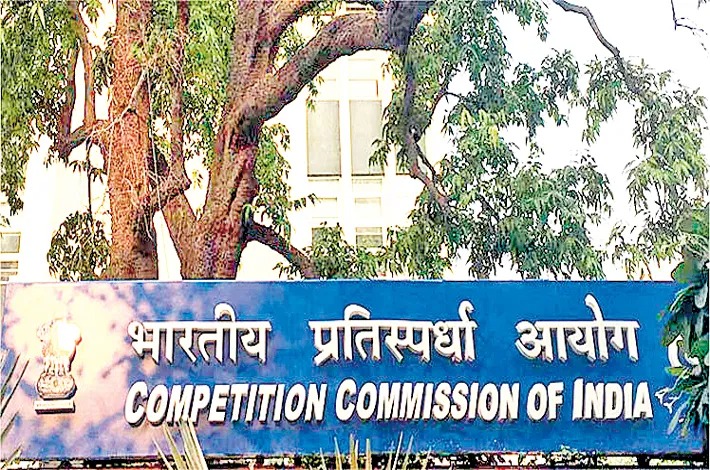K. K. Mathew, J.@mdashThe petitioner in this writ petition is the tenant of a building belonging to the 1st respondent. He filed an application before the Rent Control Court for directing the 1st respondent-landlord, to effect necessary repairs to the house let out to him and also for restoring its amenities. The alternative prayer in the application was that in case the landlord fails to carry out the repairs, the tenant might be allowed to carry them out and to recover the expenses from the 1st respondent. The petitioner took the house for a rent of Rs. 20/-. The allegations were that the landlord failed to effect necessary repairs to the house from 1951 onwards and as a result of his negligence a part of the wall surrounding the well got loosened and fell into the well and that portions of the kitchen-wall which stood adjacent to the well also fell to the ground on 18-10-1957 and that in spite of repeated notices to the landlord for effecting the repairs and for restoring these amenities, he has not done so. The 1st respondent traversed the allegations in the petition and contended that he was not responsible in any way for the loss of the amenities as contended by the petitioner. The Rent Control Court after considering the evidence, came to the conclusion that the only person competent to direct the repair to the building and the restoration of the amenities under the Kerala Buildings (Lease and Rent Control) Act was the Accommodation Controller and that the Rent Control Court also held that there was no wilful omission on the part of the landlord in the matter of repairing the building and restoring the amenities and therefore the tenant was not entitled to any relief. C. M. A. 202 of 1960 was filed against this order before the Subordinate Judge and he held that the Rent Control Court had ample jurisdiction to dispose of the matter pending before him in view of Section 33 of Act 16 of 1959. The Subordinate Judge also directed the landlord to restore the well to its original condition in as much as it was an ''amenity'' falling u/s 13 (1) of the Rent Control Act. So far as the kitchen and the bath room were concerned, the Subordinate Judge held that they were not amenities and since they were no longer in existence, it was not competent for the Rent Control Court to pass an order directing the landlord to reconstruct the same. Against that order the tenant as well as the landlord filed revision petitions.'' These revision petitions were disposed of by the District Judge and she came to the conclusion that the kitchen, the well and the bath room were not amenities and that the landlord has not wilfully cut off any of the amenities and dismissed C. R. P. 360/61 filed by the tenant and allowed C.R. P. 380/61 filed by the landlord. She therefore dismissed the petition filed by the tenant before the Rent Control Court. This petition has to be disposed of on the decision of the question whether the kitchen and the well were amenities as specified in Section 13 of the Rent Control Act. Section 13 (1) of that Act precludes the landlord from interfering with the amenities enjoyed by the tenant and directs that no landlord shall without just cause of sufficient reason cut off or withhold any of the amenities. Section 17(2) directs that the landlord should attend to the periodical maintenance and necessary repairs to the building and to its amenities. And if the landlord fails to attend to such maintenance or repairs to the building and the amenities thereto within a reasonable time after notice is given by the tenant, the Accommodation Controller is given the power to direct, on the application of the tenant, that such maintenance might be effected and to deduct the costs thereof from the rent. The question as to what exactly is an amenity is by no means an easy one. In Black''s Law Dictionary ''amenity'' is defined as follows:
"In real property law. Such circumstances, in regard to situation, outlook, access to watercourse, or the like, as enhance the pleasantness or desirability of an estate for purposes of residence, or contribute to the pleasure and enjoyment of the occupants, rather than to their indispensable needs.
In Murray''s New English Dictionary ''amenity'' is defined as follows:
1. The quality of being pleasant or agreeable:
(a) of places, their situation, aspect, climate, etc...
In Narayanan v Appukutty (1952 2 M. L. J. S. N. 31) Ramaswamy Iyer J., said that an amenity is nothing but a convenience. It was held in that case that the roof of a building forms part and parcel of a building and that it cannot be considered to be an amenity. In Soorajmall v I. N. Drug Co. (A. T. R. 1956 Calcutta 187) it was observed:
If the roof is leaking, the landlord may be called upon to stop the leaking and that can be done either by having a special coating over the roof as is now available or feasible or by some other means. If there is any portion of the roof which is likely to collapse, that is a matter which may be reported to the corporation for taking necessary steps as against the defaulting party. But it is outside the scope of S. 38, Rent Control Act, and beyond the competence of the Rent Controller.
In Ullar Dinkar Rao v M. Ratna Bai (A.I.R. 1958 Mysore 77) it was held that a bath room is an amenity to a building, as the bath room enhances the desirability of a house for the purpose of residence and contributes to the enjoyment of the occupant of the house. If the above decision is correct, it follows that the tenant is entitled to the relief in respect of the bath room. But significantly enough he has not prayed for the restoration of the bath room in his petition, and therefore it is not necessary to consider the question whether bath room is an amenity.
2. The only question in this case is whether the kitchen and the well are amenities. It is no doubt true that they are necessary for the convenient enjoyment of the building. But I find it difficult to accept the contention that they are amenities in the sense in which that expression is used in Section 13. Even assuming that they are amenities, the question is whether the tenant is entitled to have them reconstructed, once the kitchen has been dismantled and the well filled up by the Municipality. If it was solely due to the negligence of the landlord in not effecting timely repairs that the Municipality dismantled the kitchen and filled up the well one can perhaps understand the grievance of the petitioner. The evidence in the case is that the tenant did not inform the landlord about the necessity of the repairs until the day previous to his filing the petition before the Rent Control Court. It is therefore difficult to accept the contention of the petitioner that the landlord has cut off the amenities without just or reasonable cause. It is essential that the landlord should have cut off the amenities without just or sufficient cause in order that the tenant may get relief under Sectional 3. There is nothing on record to show that the tenant approached the landlord earlier with a demand to make the repairs and that the landlord omitted to effect the same. If there has been such a request to the landlord, one could understand the case of the petitioner that it was on account of neglect of the landlord that the amenities were cut off and that he must be made responsible for the same as if he himself had done it. I do not think that the District Judge was in error in upholding the contention of the landlord that he has not cut off the amenities. There is no error of law apparent on the face of the record. I therefore dismiss this writ petition. No costs.

